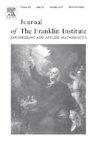Deep convolutional sparse dictionary learning for bearing fault diagnosis under variable speed condition
IF 3.7
3区 计算机科学
Q2 AUTOMATION & CONTROL SYSTEMS
Journal of The Franklin Institute-engineering and Applied Mathematics
Pub Date : 2024-11-12
DOI:10.1016/j.jfranklin.2024.107392
引用次数: 0
Abstract
Dictionary learning is a usual method in the field of machinery fault diagnosis, but it requires that the rotating speed conditions of training set and test set are the same and constant. When the speed condition of test set is different from that of training set or one of them is time-vary, normal dictionary learning is difficult to get a precise sparse representation. A special dictionary model named convolutional sparse dictionary (CSD) can overcome the influence from variable speed conditions by atoms locally shifting in the sample's dimension, which is beneficial to capture the local fault features in the signal no matter how the speed changes. However, there are both large features and small features in the mechanical vibration signal, and several continuous small features can also form a large feature. The problem is that CSD can only locally optimize the signal at a fixed scale, so the features of other scales cannot be optimized. To solve this problem, this paper proposes a model named deep convolutional sparse dictionary (DCSD) to extract bearing fault features under variable speed conditions, which is improved from CSD. DCSD has multiple dictionary layers, where each layer is a CSD, but the atom's dimensions are different in each layer. The larger the number of layer is, the larger the atom's dimension is, and the sparse representation result of each layer is used to train the next dictionary layer. Through simulations cases and experimental cases under variable speed conditions, it is proved that DCSD has better performances than CSD in the fault diagnosis.
用于变速条件下轴承故障诊断的深度卷积稀疏字典学习
字典学习是机械故障诊断领域的常用方法,但它要求训练集和测试集的转速条件相同且恒定。当测试集的转速条件与训练集的转速条件不同,或者其中一个转速条件是时变的,普通的字典学习就很难得到精确的稀疏表示。一种名为卷积稀疏字典(CSD)的特殊字典模型可以通过原子局部移动样本维度来克服变速条件的影响,无论速度如何变化,都有利于捕捉信号中的局部故障特征。然而,机械振动信号中既有大特征也有小特征,几个连续的小特征也可以形成一个大特征。问题在于,CSD 只能对固定尺度的信号进行局部优化,其他尺度的特征无法得到优化。为解决这一问题,本文在 CSD 的基础上提出了一种名为深度卷积稀疏字典(DCSD)的模型,用于提取变速条件下的轴承故障特征。DCSD 有多个字典层,每一层都是 CSD,但每一层的原子维度不同。层数越多,原子维度越大,每一层的稀疏表示结果用于训练下一层字典。通过模拟案例和变速条件下的实验案例,证明 DCSD 在故障诊断方面的性能优于 CSD。
本文章由计算机程序翻译,如有差异,请以英文原文为准。
求助全文
约1分钟内获得全文
求助全文
来源期刊
CiteScore
7.30
自引率
14.60%
发文量
586
审稿时长
6.9 months
期刊介绍:
The Journal of The Franklin Institute has an established reputation for publishing high-quality papers in the field of engineering and applied mathematics. Its current focus is on control systems, complex networks and dynamic systems, signal processing and communications and their applications. All submitted papers are peer-reviewed. The Journal will publish original research papers and research review papers of substance. Papers and special focus issues are judged upon possible lasting value, which has been and continues to be the strength of the Journal of The Franklin Institute.

 求助内容:
求助内容: 应助结果提醒方式:
应助结果提醒方式:


